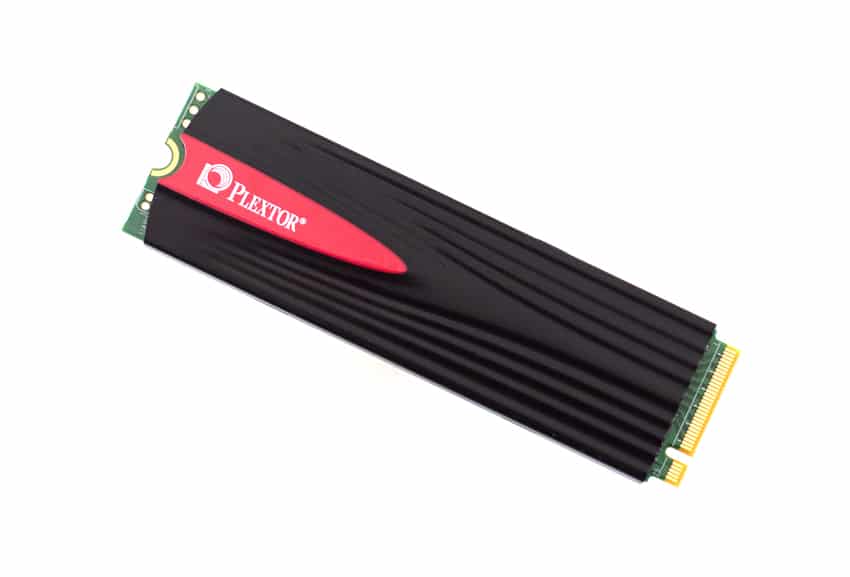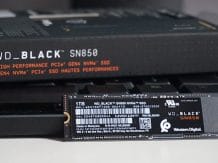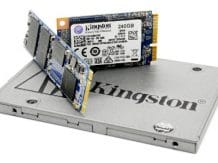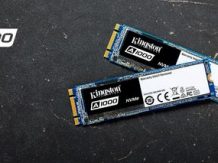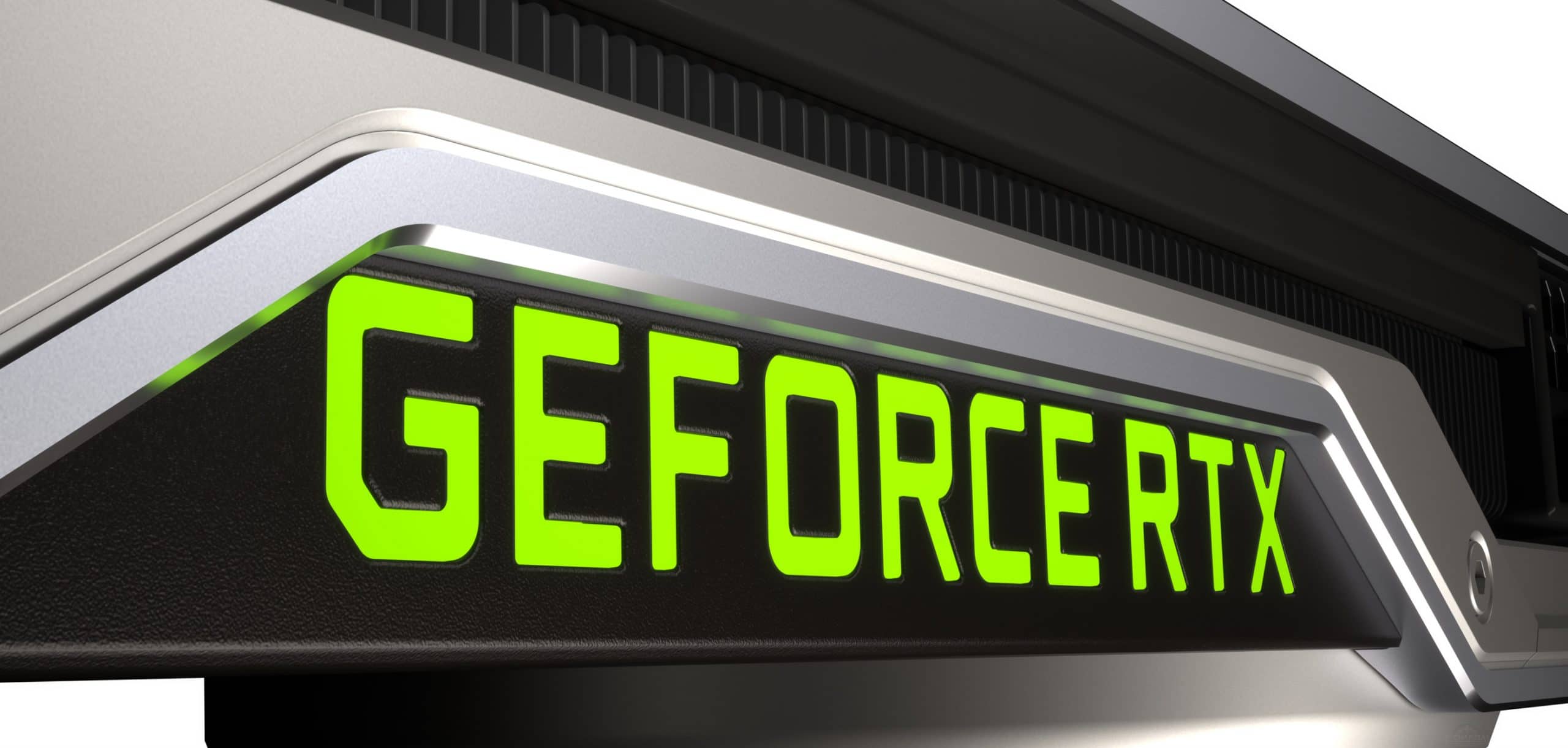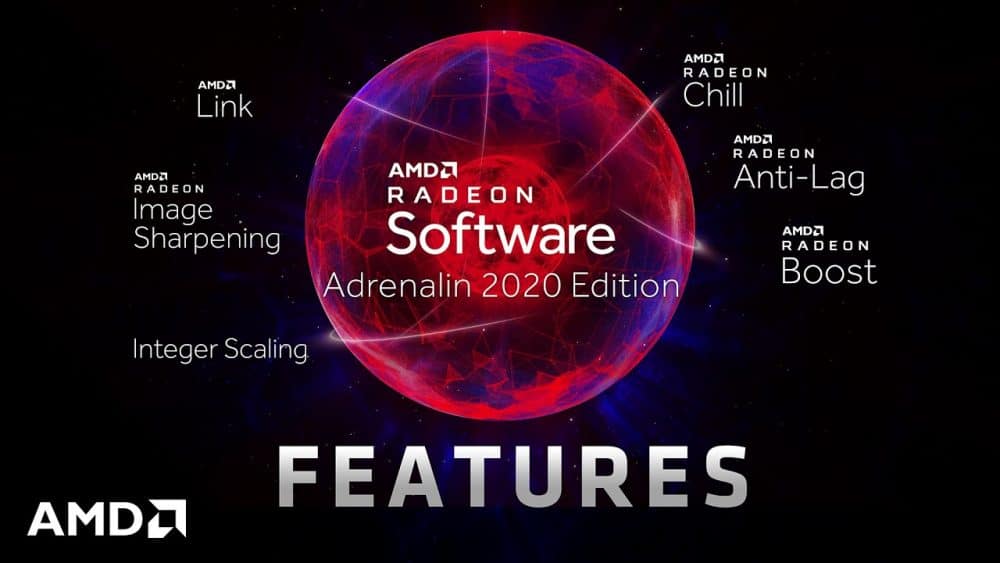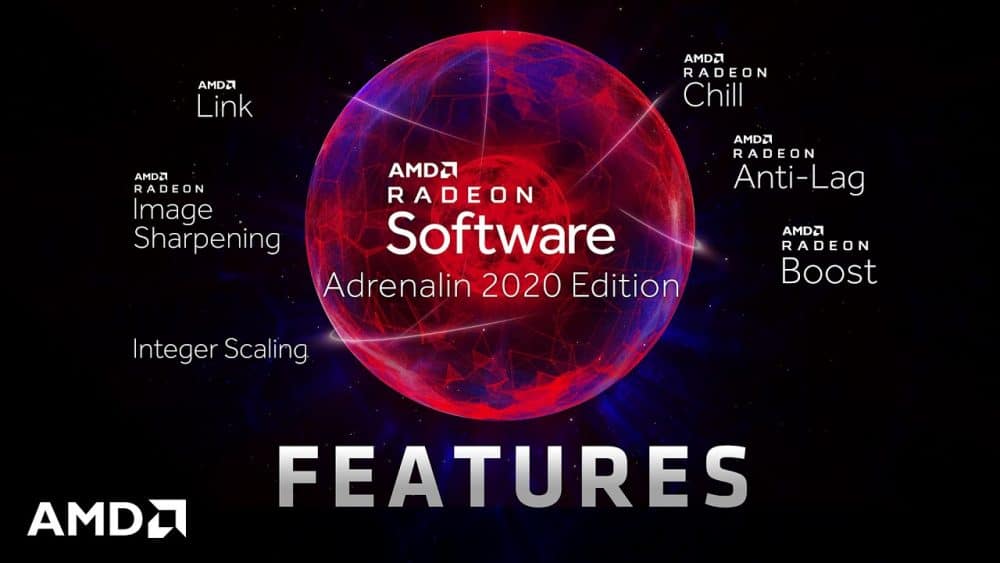Review and testing of SSD-drive PCIe NVMe Plextor M9PGN Plus (PX-1TM9PGN +) 1 TB: Today will will take a look at the Specs, Hashrate, CPU performance and also a testing of this SSD Drive. We will go into more details as it regards to the testing in the article below.
Today we have a Plextor brand SSD. This is an old and very famous brand that specializes in the production of drives. The brand belongs to the no less old and well-known company Lite-On.
They started their activity with optical drives (I remember them from the price lists of computer stores back in the 90s); but now, keeping up with the times, the company has switched to the production of SSD-drives.
We will be looking at the 1TB Plextor 1TM9PGN Plus SSD. This is a large capacity; and given the relationship between SSD capacity and performance, we can expect high performance from it.
The Plextor M9PGN Plus series includes three drives with capacities ranging from 256GB to 1TB. The manufacturer positions this series of drives as gaming. And the declared characteristics leave no doubt about it. The official page of the Plextor M9PGN Plus series SSDs is here.
Technical characteristics and technological features
announcements and advertisements
-14000р на RTX 3060 ASUS Dual
RTX 3060 MSI Gaming – a drain for a penny
RTX 3070 <b> cheapest and all </b> at Compeo.ru
-15000р на RTX 3060 MSI Ventus
Prices for video cards went down steeply
-14000р на RTX 3060 Gigabyte Eagle
Another top vidyaha with a mega discount
RTX 3060 – prices have gone down
First-hand Z590 motherboards at very good prices
RTX 3060 12Gb in XPERT.RU – be in time 🙂
<b> Galaxy S20 family price crash </b> 25% discount
RTX 3070 at XPERT.RU at the lowest prices
Lots of RTX 3090 in XPERT.RU
Specification: Hashrate
| Model | PX-256M9PGN + | PX-512M9PGN + | PX-1TM9PGN + |
| Form factor | M.2 2280 | M.2 2280 | M.2 2280 |
| Interface | NVMe PCIe Gen 3 x4 | NVMe PCIe Gen 3 x4 | NVMe PCIe Gen 3 x4 |
| Capacity | 256 GB | 512 GB | 1 TB |
| Controller | Marvell 88SS1092 | Marvell 88SS1092 | Marvell 88SS1092 |
| NAND | KIOXIA BiCS4 3D TLC | KIOXIA BiCS4 3D TLC | KIOXIA BiCS4 3D TLC |
| RAM | 512 MB | 512 MB | 1 GB |
| Max. reading speed | 3400 MB / s | 3400 MB / s | 3400 MB / s |
| Max. write speed | 1700 MB / s | 2200 MB / s | 2200 MB / s |
| Resource by appointment | 160 TB | 320 TB | 640 TB |
| Weight | 10 g | 10 g | 10 g |
| Guarantee | 5 years | 5 years | 5 years |
Perhaps readers will be interested in the question, what is this brand of KIOXIA flash memory and where did it come from? KIOXIA is actually a good old Toshiba Memory, which has re-branded and now appears to the world under that name (details). By the way, the drive uses the latest technology from Toshiba: 96-layer BiCS4 3D TLC. It also gives hope for high speed performance.
It should be noted that the manufacturer clearly stated in the parameters the type of controller used and the type of flash memory used. Thus, he guarantees the buyer that he will purchase a drive with exactly this configuration, and no other. I remember that some time ago SSD manufacturers indulged in the fact that under the same name of the drive they could sell completely different “stuffing”. Now this negative phenomenon, fortunately, is almost eradicated.
As for the price, it is difficult to say what it will finally be set in Russia for the tested 1 TB drive due to strong fluctuations in currency rates; and in Europe it costs about 185 euros.
SSD packaging, packaging and design
The drive came to us in a package containing both dark and bright elements (which is quite consistent with the “gaming” style):

On the back of the package, the main technical parameters of this series of drives are indicated:

The walls of the package are not too thick, and the main protection of the drive from adverse influences on the way is provided by a strong plastic box:

To the left of the drive, the package contains a screw for attaching to the motherboard (visible as a small gray spot). But usually motherboard kits already have a screw for M.2 boards.
And here, finally, we have the hero of the review, as it is:

All chips are located on one side of the board; and directly on them a label with the details of the product is glued.
Despite the strictest warning on the label that the warranty is lost if it is torn off; naturally, the label was removed (fortunately, this is done very easily and without damaging the label itself or the drive):

To understand the electronics of the drive, let’s take a look at its right and left parts separately. Let’s start on the right side:

Here is the 88SS1092 controller made by Marvell, the NT6CL256M32AM-H01 RAM made by Nanya and the necessary harness.
The Marvell 88SS1092 controller is a modern high-performance model that supports 8 channels of TLC flash memory in 15/16 nm technology. The Nanya NT6CL256M32AM-H01 RAM chip is a regular 1GB DDR3 memory with a 256M 32bit organization, since the controller supports a 32bit bus.
Now let’s look at the other half of the drive:

The flash memory of the drive is located here in the form of two TH58LJT2T24BAEF microcircuits manufactured by KIOXIA (formerly Toshiba Memory), manufactured using 96-layer BiCS4 3D TLC technology.
Large microcircuits; and, most likely, each of them contains several memory chips, but it was not possible to find out the exact architecture.
On the reverse side of the drive board there are only metallization tracks coated with green varnish for protection:

Test bench and additional software
The test bench used is based on the following components:
- AMD Ryzen 9 3900X 3.8 GHz processor;
- Motherboard: ASUS ROG Crosshair VIII Hero (Wi-Fi);
- RAM: 2 x 8 GB DDR4 Patriot Viper Steel PE000599-PVS416G440C9K;
- Video card: Gigabyte GeForce GT1030 GV-N1030D5-2GL;
- Power supply unit: Cooler Master MasterWatt Lite 500 MPX-5001-ACABW-ES (500 W);
- Case: an open stand (to exclude the influence of the quality of the case on the results of thermal measurements);
- Operating system: Windows 10 x64 with all current updates from Windows Update.
Before the tests, the system was rebooted and the Trim command was executed for the tested SSD (exceptions will be mentioned in the text). In addition, the Internet was physically disconnected.
Briefly characterizing the test bench, its performance is sufficient not to become a “bottleneck” and, if possible, not to influence the results of measurements of SSD performance.
When testing the SSD, additional software was installed on the system: the Plextool NVMe edition utility downloaded from the manufacturer’s website.
This utility has not too wide functionality, all of it is presented in this screenshot:

To test the performance of the drive, we used “old” versions of test utilities in order to ensure comparability with the data of previous SSD tests.
The following operations were used to check the copying and processing of real files:
- Copying a folder with photos in jpeg format, size 1.52 GB (1 634 471 499 bytes), 410 files;
- Copying a folder with HD-video (AVC), folder size 10.4 GB (11 147 297 564 bytes), 7 files;
- Copying a folder with music audio recordings in mp3 format, folder size 1.52 GB (1 634 133 002 bytes), 481 files;
- Copying a folder with documents in doc format, folder size 1.50 GB (1 612 546 048 bytes), 566 files;
- Processing of the mkv container using the MKVToolnix 18.0.0 program with the removal of all audio tracks and subtitles (a short animated film Sintel was used as a sample in the form of a 5.11 GB file);
- Archiving the above folders with photos and documents into one archive (7Zip archiver version 19.00 x64, archive type – 7z, no compression).
To test the copying of large amounts of data, movie folders were used (since they are poorly compressed data, which will reduce the impact of data compression algorithms).
Temperature and stability testing
The Crystal Disk Info utility (8.4.0) shows that, in steady state without performing any operations, the SSD temperature is 45 degrees:

Now let’s make a couple of elementary tests that shed light on the properties of the drive. These tests are for linear reading and linear writing.
For linear reading, an array of poorly compressible information was previously written to the drive (by about 10% of the volume). This was necessary to determine the reaction of the system to reading memory with and without data (cells in this case are marked as “empty” in the SSD).
Here’s what happened in the linear reading test:

Here you can see that in the area where the real data was contained, the read speed fluctuated around 1700 MB / s; and on the “empty” site it increased to 1960 MB / s.
This is possible only in one case: if the controller sees that reading is carried out from “empty” cells, then it does not actually read, but sends a continuous stream of zero data to the system. This is not bad, as it is one of the algorithms for speeding up the SSD; but suggests that the behavior of SSDs can be very diverse depending on the type of data and their availability as such.
And, of course, we must remember that the manufacturers in the technical data indicate the maximum value of all possible.
Heating during the linear reading test was slight, the temperature rose only to 54 degrees.
Now let’s move on to the linear recording test:

The picture with linear recording turned out to be typical for modern SSD-drives that use the so-called SLC cache for their work.
The SLC cache is a portion of flash memory temporarily transferred from TLC to SLC “fast” mode. Until it ends, the recording goes quickly; and when it ends, it goes at the “normal” speed of the flash memory (which is not so great).
In this case, the SLC cache was enough for about 6% of the write from the total drive volume; Is it a lot or a little? In gigabytes, this will be approximately 60 GB. This volume is enough to install many modern 3D games. The write speed was about 1900 MB / s.
For those games that do not have enough 60 GB, the excess of this volume will be recorded at a speed of about 540 MB / s, which is also a lot! Thus, in real conditions, the user is unlikely to ever notice a write slowdown due to the lack of SLC cache.
Also, on the linear recording graph, a short-term drop in speed up to 135 MB / s at the end of the cycle is noticeable (the phenomenon turned out to be stable). This drop is probably due to the need to maintain the cache (information from it must be transferred to the main memory, the cache itself from SLC must be converted back to TLC, etc.).
During the linear recording test, a test was also performed to check the presence or absence of throttling. In the middle of the test, a fan was turned on for a few minutes, directed at the drive to cool it down.
At the same time, the course of the chart did not change, i.e. the reason for the drop in performance was natural processes in the drive, and not throttling.
By the end of the linear write test, the temperature of the drive increased much more than in the read test, and reached 70 degrees:

It should be remembered that the test was carried out in an “ideal case”, ie. without a case at all. The situation in a real case may be worse due to the proximity of heat sources in an enclosed space (will depend on ventilation).
Accordingly, the question of the need to install a heatsink on a drive must be decided based on the conditions of a specific application. In most cases, you won’t need it.
The use of the most modern energy-saving components in the tested SSD made it possible to significantly reduce the severity of the overheating problem.
Now let’s check the stability of the speed characteristics of the drives in various situations of its use. The tests were carried out using the CrystalDiskMark 3.0.3 utility for four variants: “calm” state (the disc is written at 20%); state immediately after writing (copying) a high amount of data of 51450909004 bytes (47.9 GB of writing without a Trim command), one hour after writing a high amount of data (again without a forced Trim command), and finally after issuing a Trim command.
These tests allow you to determine to what extent the internal processes after data recording “interfere” with the work with new data; whether the drive is automatically “cleaned up” and how successful it is.
The tests showed good stability. The performance fluctuated only within the limits of natural random deviations from measurement to measurement.
This, of course, does not mean that copying a large amount of files did not “strain” the drive in any way. It only means that the drive restored its speed characteristics quickly and unnoticed by the user.
More serious situations, such as deleting files while reading or copying, will be discussed later. There it will no longer pass unnoticed.
Performance testing
So, as we saw in the previous chapter, the tested drive in write mode has two modes of operation: “fast” (without cache overflow) and “slow” – when the cache is full.
I must say right away that performance testing was completely carried out in the “fast” mode. We will assume that the consumer is aware of the features of the drives and will not “force” them, leading to a cache overflow. And it will be quite difficult in natural conditions to create such a situation for the tested SSD. 🙂
To simulate operation in conditions “as close as possible to combat”, the drive was tested with 20-40% filled with poorly compressible data. And to guarantee the provision of the “fast” mode, before each test, a reboot was performed, an optimization command was given, after which – a few more minutes of “rest”.
Anvil’s Storage Utilities 1.1.0
For warm-up – test results in Anvil’s Storage Utilities 1.1.0.

Another popular test is Atto:

Futuremark PCMark 7
This test simulates user actions when working at a computer, i.e. without a “race to speed”.
The first result is the grand total in points; the rest, except for the first – in megabytes per second. Score
Turn on JavaScript to see graphs Windows Defender
Turn on JavaScript to see graphs Importing pictures
Turn on JavaScript to see graphs Video editing
Turn on JavaScript to see graphs Windows Media Center
Turn on JavaScript to see graphs Adding Music
Turn on JavaScript to see graphs Starting applications
Turn on JavaScript to see graphs Gaming
Turn on JavaScript to see graphs
CrystalDiskMark (64bit) 3.0.3
This test checks the read / write speed in several modes with a stream of random, poorly compressible data. This allows you to reduce the impact on the result of internal compression algorithms in drives; but it should be borne in mind that the “accelerating” algorithms in modern storage devices are so cunning and resourceful that it is hardly possible to completely eliminate their influence. Sequential reading
MB / s
Turn on JavaScript to see graphs Reading in blocks of 512 KB
MB / s
Turn on JavaScript to see graphs Reading in 4 KB blocks
MB / s
Turn on JavaScript to see graphs Reading in 4 KB blocks, request queue depth – 32
MB / s
Turn on JavaScript to see graphs Sequential write
MB / s
Turn on JavaScript to see graphs Write in blocks of 512 KB
MB / s
Turn on JavaScript to see graphs Writing in 4 KB blocks
MB / s
Turn on JavaScript to see graphs Writing in 4 KB blocks, request queue depth – 32
MB / s
Turn on JavaScript to see graphs
Operations with different types of files inside drives
In this subsection, in addition to actually copying typical sets of files, we will check the operations of editing a video file and archiving two folders with different types of content (in one – audio files, in the other – doc documents). Copying photos with
Less is better
Turn on JavaScript to see graphs HD video copying, with
Less is better
Turn on JavaScript to see graphs Copying audio recordings, with
Less is better
Turn on JavaScript to see graphs Copying documents in Word 97-2003 format, with
Less is better
Turn on JavaScript to see graphs Mixing mkv, s
Less is better
Turn on JavaScript to see graphs Archiving, s
Less is better
Turn on JavaScript to see graphs
Access time for random read and write operations
The access times of SSDs are so much shorter than “traditional” HDDs that they can generally be neglected. But since such a parameter exists, then it will be checked.
The average access time for read and write operations was obtained as a result of testing AS SSD Benchmark version 1.7.4739.38088. Random read, ms
Less is better
Turn on JavaScript to see graphs Random write, ms
Less is better
Turn on JavaScript to see graphs
Copying large files
In previous tests, we checked the drive’s operation in “fast” mode (when the cache size is enough to perform test operations). And, as already mentioned, in most cases, this is exactly how the SSD will work.
But the cases are different, so we will check the operation of the SSD when going beyond this mode, for which we will use copying files in large volumes.
By “large volume” of copied files, in this case, we mean such a volume that is guaranteed to “fill up” the drive’s cache. And, accordingly, in this case it will be interesting to observe the behavior of the drive in this process.
To do this, we will copy 100 GB of poorly compressed files (movies) within the drive.

The graph shows a “two-stage” section of fast copying at the beginning of the graph, when the cache of different levels is working – both the drive’s own cache and the external one.
Then the speed decreases and fluctuates with sawtooth climbs and dips.
The copying time was 2 minutes. 48 s; the average copy speed was almost exactly 600 MB / s. A very good result, considering that the drive was deliberately placed in difficult conditions.
Reading / copying files with simultaneous deletion
Such a load (reading and / or writing one information while simultaneously deleting another) is typical for server applications, when different processes (or different users) can simultaneously perform write, read and delete operations.
Moreover, the removal operation for SSDs, unlike traditional HDDs, is very difficult.
In good old HDDs, you do not need to delete the information itself – just mark that it has been deleted. And then, when new information arrives, the magnetic layer can be rewritten as you like: instead of zeros, write ones, or vice versa.
This cannot be done in an SSD, as the recording is “unidirectional”. Before recording new information, the cells must be cleared of the old. And this is an additional load on the drive.
To test the behavior of the drive, a large amount of data (100 GB) was deleted during the drive linear read test. Before that, the disk was filled with data with a total volume of 200 GB, i.e. there should be another 100 GB of data left after deletion.
We do the deletion “honestly”, and not by moving files to the “Recycle Bin” (which in the physical sense is not deletion). Then we take a screenshot of the reading graph, here it is:

The deletion was performed when 5% of the disk was read. As a result of deleting files with some delay, a sharp downward peak appeared. This is a delayed response of the drive to deletion associated with a large amount of “internal work” after deletion (cleaning, etc.).
The drop in read speed turned out to be, although not catastrophic (at the bottom point, the read speed was still about 340 MB / s), but quite noticeable. The phenomenon is stable, a repetition of the experiment showed the same result.
The fact of a deep (albeit short in time) dip in the read speed after deleting files suggests that it is not recommended to use a drive for server-type loads.
Another additional experiment on the same topic is with deleting files during a copy operation. Copying files of 200 GB was specified; deletion (100 GB) was performed when 6% of the volume was copied.
Here’s what happened:

This is where the low copy speed section between the high speed sections is striking.
The drop in speed was caused by the deletion of large files with some delay. After the drive completed the deletion, the speed returned to a high level, and continued at this rate for quite a long time.
Apparently, after working off deleting files, the drive converted a part of the volume freed for this reason into the SLC cache, which made it possible to continue copying at high speed for a relatively long time.
Repetitions of the test showed that the length of the section with a low copying speed can change, but it does not disappear completely.
On the whole, in these tests with long and, moreover, different types of operations, the drive showed itself on the positive side, in the sense that it timely fulfills the “hindrance” in the form of deleting a large amount of files, and then restores its speed directly in the course of operations.
Conclusion
The tested Plextor drive showed high, though not a record for the present time, performance. In addition to it, the pluses include good work in difficult conditions: copying a large file size, reading and copying with the simultaneous deletion of files.
Also, the advantages include moderate heating of the drive and its design with one-sided arrangement of elements, which will allow it to be used in laptops, where literally every millimeter is important.
As for the shortcomings, it is worth mentioning that the test result turned out to be slightly lower than the stated characteristics. Perhaps, in the future, the manufacturer will finalize the firmware, and the test results will coincide with the declared values. At the time of testing, there were no fresh firmwares for this SSD on the manufacturer’s website yet.





